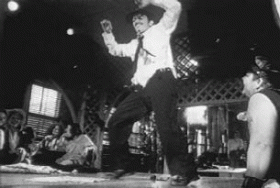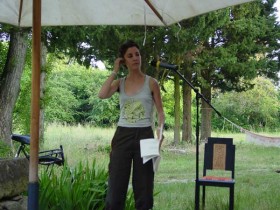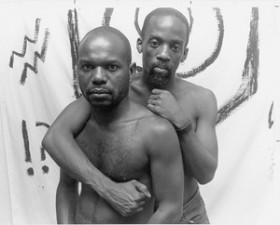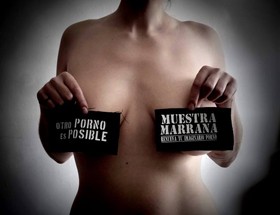Explosive bursts of fire open Technology/Transformation, an incendiary deconstruction of the ideology embedded in television form and pop cultural iconography. Appropriating imagery from the 1970s TV series Wonder Woman, Birnbaum isolates and repeats the moment of the “real” woman’s symbolic transformation into super-hero. Entrapped in her magical metamorphosis by Birnbaum’s stuttering edits, Wonder Woman spins dizzily like a music-box doll. Through radical manipulation of this female Pop icon, she subverts its meaning within the television text. Arresting the flow of images through fragmentation and repetition, Birnbaum condenses the comic-book narrative — Wonder Woman deflects bullets off her bracelets, “cuts” her throat in a hall of mirrors — distilling its essence to allow the subtext to emerge. In a further textual deconstruction, she spells out the words to the song Wonder Woman in Discoland on the screen. The lyrics’ double entendres (“Get us out from under… Wonder Woman”) reveal the sexual source of the superwoman’s supposed empowerment: “Shake thy Wonder Maker.” Writing about the “stutter-step progression of ‘extended moments’ of transformation from Wonder Woman,” Birnbaum states, “The abbreviated narrative — running, spinning, saving a man — allows the underlying theme to surface: psychological transformation versus television product. Real becomes Wonder in order to “do good” (be moral) in an (a) or (im)moral society.”
*Dara Birnbaum, an architect and urban planner by training, Dara Birnbaum began using video in 1978 while teaching at the Nova Scotia College of Art and Design, where she worked with Dan Graham. Recognized as one of the first video artists to employ the appropriation of television images as a subversive strategy, Birnbaum recontextualizes pop cultural icons (Technology/Transformation: Wonder Woman, 1978-79) and TV genres (Kiss the Girls: Make them Cry, 1979) to reveal their subtexts. Birnbaum describes her tapes as new “ready-mades” for the late 20th Century—works that “manipulate a medium which is itself highly manipulative.”




